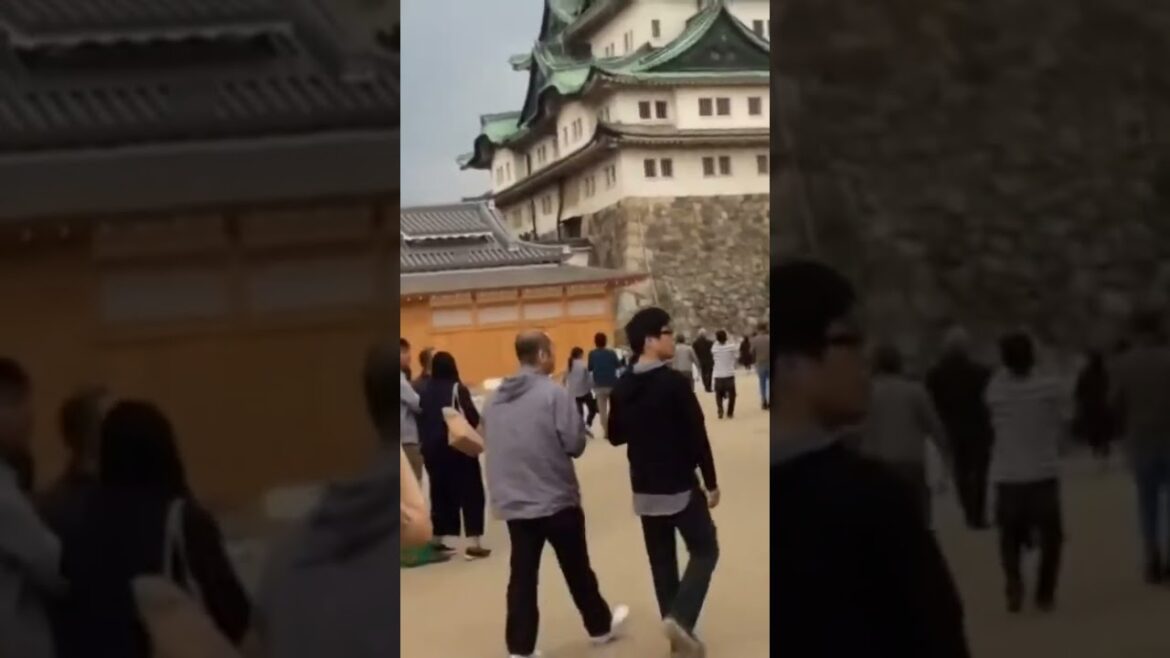Nagoya Castle #japan #japanese #japanlife #japantravel #japanvlog #nagoya
Footage I took today on my way to Nagoya Castle as well as at Meijo Park and the castle itself. Enjoy!
Please like, comment, and subscribe!
BOOK:
TWITTER:
FACEBOOK:
https://www.facebook.com/justinnizza
iTUNES:
https://itunes.apple.com/us/artist/justin-nizza/id901925263
BLOG:
https://pizzaboynizza.wordpress.com
INSTAGRAM:
pizzaboynizza
VIDEO GAME (When Imaginary)
https://pizzaboynizza.itch.io/when-imaginary
Nagoya Castle (名古屋城 Nagoya-jō?) is a Japanese castle located in Nagoya, central Japan. During the Edo period, Nagoya Castle was the heart of one of the most important castle towns in Japan, Nagoya-juku, which was a post station on the Minoji road linking two of five important trade routes, the Tōkaidō and the Nakasendō.
Another way of pronouncing Nagoya Castle (名古屋城) is Meijō (名城). This name is used for many city institutions, such as Meijō Park, the metro’s Meijō Line and Meijo University, reflecting the cultural influence of this historic structure.
Nagoya (名古屋) is the largest city in the Chūbu region of Japan. It is Japan’s fourth-largest incorporated city and the third-most-populous urban area. It is located on the Pacific coast on central Honshu. It is the capital of Aichi Prefecture and is one of Japan’s major ports along with those of Tokyo, Osaka, Kobe, Yokohama, Chiba, and Kitakyushu. It is also the center of Japan’s third-largest metropolitan region, known as the Chūkyō metropolitan area. As of 2015, 2.28 million people lived in the city, part of Chūkyō Metropolitan Area’s 10.11 million people.[4] It is also one of the 50 largest urban areas in the world.
Oda Nobunaga and his protégés Toyotomi Hideyoshi and Tokugawa Ieyasu were powerful warlords based in the Nagoya area who gradually succeeded in unifying Japan. In 1610, Tokugawa Ieyasu moved the capital of Owari Province from Kiyosu, about seven kilometers (4.3 miles) away, to a more strategic location in present-day Nagoya.
Tokugawa period
During this period Nagoya Castle was constructed, built partly from materials taken from Kiyosu Castle. During the construction, the entire town around Kiyosu Castle, consisting of around 60,000 people, moved from Kiyosu to the newly planned town around Nagoya Castle.[5] Around the same time, the nearby ancient Atsuta Shrine was designated as a waystation, called Miya (the Shrine), on the important Tōkaidō road, which linked the two capitals of Kyoto and Edo (now Tokyo). A town developed around the temple to support travelers. The castle and shrine towns formed the city.
Industrialization
During the Meiji Restoration Japan’s provinces were restructured into prefectures and the government changed from family to bureaucratic rule. Nagoya was proclaimed a city on October 1, 1889, and designated a city on September 1, 1956, by government ordinance.
Nagoya became an industrial hub for the region. Its economic sphere included the famous pottery towns of Tokoname, Tajimi and Seto, as well as Okazaki, one of the only places where gunpowder was produced under the shogunate. Other industries included cotton and complex mechanical dolls called karakuri ningyō.
Mitsubishi Aircraft Company was established in 1920 in Nagoya and became one of the largest aircraft manufacturers in Japan. The availability of space and the central location of the region and the well-established connectivity were some of the major factors that lead to the establishment of the aviation industry there.
World War II and later
Aerial photographs of Nagoya
Nagoya was the target of US air raids during World War II. The population of Nagoya at this time was estimated to be 1.5 million, fourth among Japanese cities and one of the three largest centers of the Japanese aircraft industry. It was estimated that 25% of its workers were engaged in aircraft production. Important Japanese aircraft targets (numbers 193, 194, 198, 2010, and 1729) were within the city itself, while others (notably 240 and 1833) were to the north of Kagamigahara. It was estimated that they produced between 40% and 50% of Japanese combat aircraft and engines, such as the vital Mitsubishi A6M Zero fighter. The Nagoya area also produced machine tools, bearings, railway equipment, metal alloys, tanks, motor vehicles and processed foods during World War II.


1 Comment
Check out more shorts at this playlist!
https://www.youtube.com/playlist?list=PLaY19z6QCkfuhj-5jqQSaKNXPFYmLHsKD
Travels in Philippines: https://youtube.com/playlist?list=PLaY19z6QCkfvpojJslJob34-hvQAz5dLq
Travels in Japan: https://youtube.com/playlist?list=PLaY19z6QCkftTycHY0m07W-3C9SY-7Y2I
My Autism Story: https://youtube.com/playlist?list=PLaY19z6QCkfse6xGOj-Uh2Lj7hMcN6JTm
Full Albums: https://youtube.com/playlist?list=PLaY19z6QCkfs3jyveZ8Ho_-CiBD5CibQE
Mental Health: https://youtube.com/playlist?list=PLaY19z6QCkfsicjCZaW5wYo09aw68F9Uo